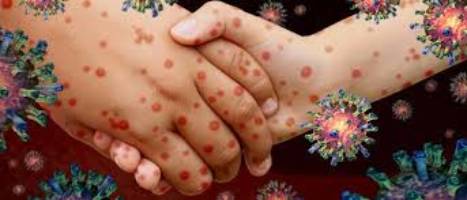Contagious diseases are illnesses caused by pathogens such as viruses, bacteria, fungi, or parasites that can be spread directly or indirectly from one person to another. Here are the top 20 contagious diseases, explained in detail:
-
Influenza (Flu)
- Cause: Influenza viruses (A, B, and C types)
- Transmission: Airborne droplets, direct contact with infected surfaces
- Symptoms: Fever, chills, muscle aches, cough, congestion, runny nose, headaches, fatigue
- Prevention: Annual vaccination, hand hygiene, avoiding close contact with sick individuals
- Common Cold
- Cause: Rhinoviruses and other viruses. Its also a contagious diseases
- Transmission: Airborne droplets, direct contact with infected surfaces
- Symptoms: Sneezing, runny nose, sore throat, cough, congestion, slight body aches, low-grade fever
- Prevention: Hand hygiene, avoiding close contact with sick individuals
-
COVID-19
- Cause: SARS-CoV-2 (a coronavirus)
- Transmission: Airborne droplets, direct contact, contaminated surfaces
- Symptoms: Fever, cough, shortness of breath, loss of taste or smell, fatigue, body aches
- Prevention: Vaccination, mask-wearing, hand hygiene, social distancing
- Measles
- Cause: Measles virus (a paramyxovirus)
- Transmission: Airborne droplets, direct contact
- Symptoms: High fever, cough, runny nose, red eyes, rash
- Prevention: Vaccination (MMR vaccine)
- Chickenpox
- Cause: Varicella-zoster virus
- Transmission: Airborne droplets, direct contact with rash
- Symptoms: Itchy rash, fever, tiredness, loss of appetite
- Prevention: Vaccination (Varicella vaccine)
- Tuberculosis (TB)
- Cause: Mycobacterium tuberculosis bacteria
- Transmission: Airborne droplets
- Symptoms: Persistent cough, chest pain, coughing up blood, weight loss, night sweats, fever
- Prevention: Vaccination (BCG vaccine), proper ventilation, early diagnosis and treatment
- Hepatitis B
- Cause: Hepatitis B virus (HBV)
- Transmission: Blood, bodily fluids, mother-to-child during childbirth
- Symptoms: Jaundice, fatigue, abdominal pain, loss of appetite, nausea, vomiting
- Prevention: Vaccination (Hepatitis B vaccine), safe sex practices, avoiding sharing needles
-
Hepatitis C
- Cause: Hepatitis C virus (HCV)
- Transmission: Blood, less commonly through sexual contact
- Symptoms: Often asymptomatic, but can include jaundice, fatigue, dark urine, abdominal pain
- Prevention: Avoiding sharing needles, safe sex practices
- Mumps
- Cause: Mumps virus (a paramyxovirus)
- Transmission: Airborne droplets, direct contact
- Symptoms: Swollen salivary glands, fever, headache, muscle aches, tiredness, loss of appetite
- Prevention: Vaccination (MMR vaccine)
-
Rubella (German Measles)
- Cause: Rubella virus (a togavirus)
- Transmission: Airborne droplets, direct contact
- Symptoms: Mild fever, rash, swollen lymph nodes
- Prevention: Vaccination (MMR vaccine)
- Pertussis (Whooping Cough)
- Cause: Bordetella pertussis bacteria
- Transmission: Airborne droplets
- Symptoms: Severe coughing fits, whooping sound when inhaling, vomiting after coughing
- Prevention: Vaccination (DTaP or Tdap vaccine)
- Streptococcal Pharyngitis (Strep Throat)
- Cause: Streptococcus pyogenes bacteria
- Transmission: Airborne droplets, direct contact
- Symptoms: Sore throat, fever, red and swollen tonsils, sometimes white patches or streaks of pus
- Prevention: Hand hygiene, avoiding close contact with infected individuals
-
Diphtheria
- Cause: Corynebacterium diphtheriae bacteria
- Transmission: Airborne droplets, direct contact
- Symptoms: Sore throat, fever, swollen glands, thick coating in the throat or nose
- Prevention: Vaccination (DTaP or Tdap vaccine)
- Scarlet Fever
- Cause: Streptococcus pyogenes bacteria
- Transmission: Airborne droplets, direct contact
- Symptoms: Red rash, sore throat, high fever, strawberry tongue
- Prevention: Hand hygiene, avoiding close contact with infected individuals
- Norovirus Infection
- Cause: Norovirus
- Transmission: Contaminated food or water, direct contact with infected individuals
- Symptoms: Diarrhea, vomiting, stomach pain, nausea
- Prevention: Hand hygiene, proper food handling, avoiding close contact with infected individuals
- Rotavirus Infection
- Cause: Rotavirus
- Transmission: Fecal-oral route, contaminated surfaces
- Symptoms: Severe diarrhea, vomiting, fever, abdominal pain
- Prevention: Vaccination (Rotavirus vaccine), hand hygiene
- Ebola Virus Disease
- Cause: Ebola virus
- Transmission: Direct contact with blood or bodily fluids of infected individuals, contaminated surfaces
- Symptoms: Fever, severe headache, muscle pain, weakness, fatigue, diarrhea, vomiting, unexplained bleeding
- Prevention: Avoiding contact with infected individuals, proper use of personal protective equipment (PPE)
-
Zika Virus Disease
- Cause: Zika virus
- Transmission: Mosquito bites, sexual contact, mother-to-child during pregnancy
- Symptoms: Fever, rash, joint pain, conjunctivitis, muscle pain, headache
- Prevention: Avoiding mosquito bites, safe sex practices
- Hand, Foot, and Mouth Disease (HFMD)
- Cause: Coxsackievirus A16 and Enterovirus 71
- Transmission: Direct contact with nose and throat secretions, saliva, fluid from blisters, feces
- Symptoms: Fever, sore throat, painful red spots inside the mouth, rash on hands and feet
- Prevention: Hand hygiene, avoiding close contact with infected individuals
- Respiratory Syncytial Virus (RSV) Infection
- Cause: Respiratory syncytial virus
- Transmission: Airborne droplets, direct contact
- Symptoms: Mild cold-like symptoms, severe cases can cause bronchiolitis or pneumonia
- Prevention: Hand hygiene, avoiding close contact with infected individuals, vaccination for high-risk groups
Understanding these diseases and taking preventive measures can help reduce the spread of infections and protect public health.

